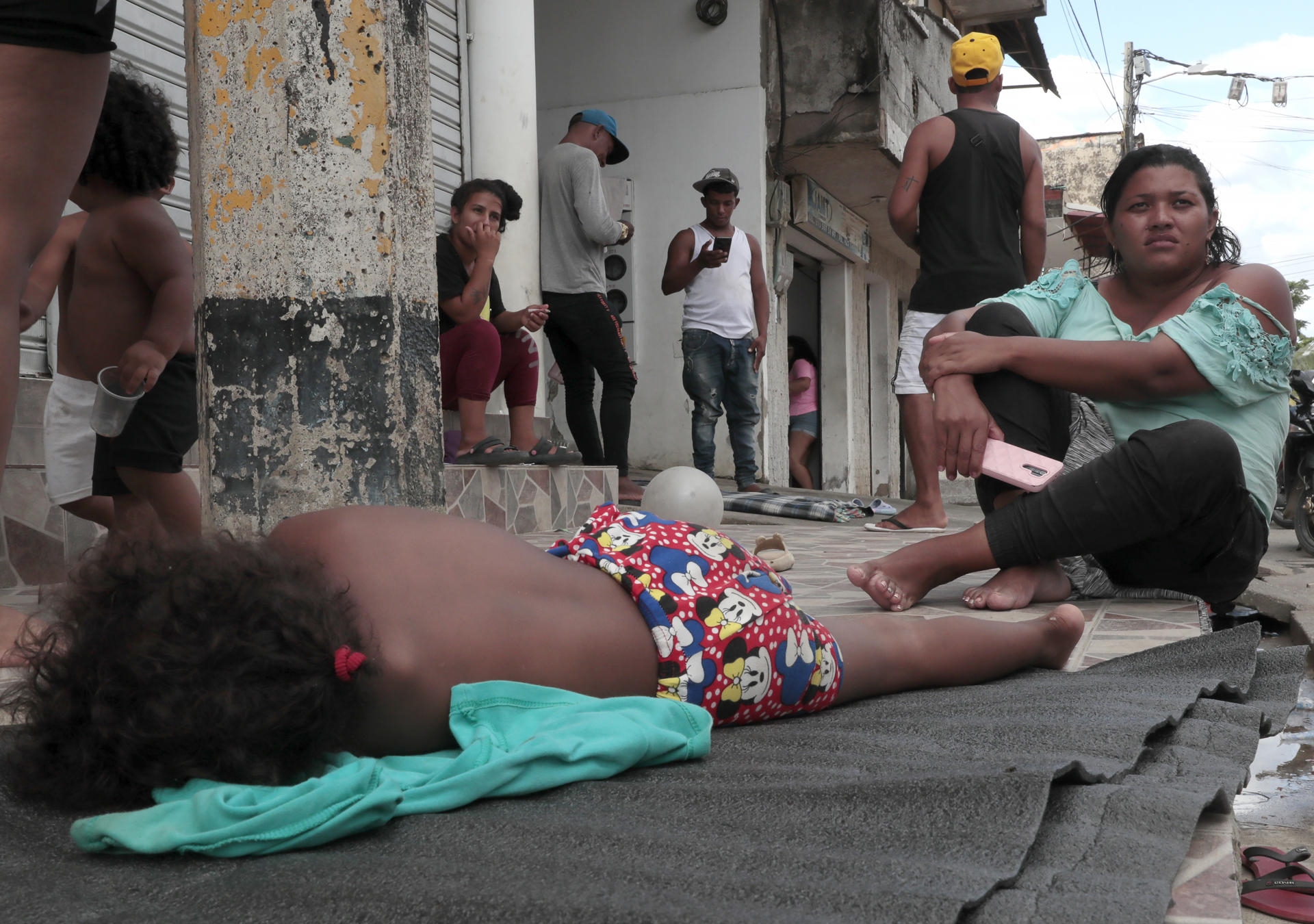Olef and Zeus, two restless one-and-a-half-year-old twins, believe they are going “on a safari to see animals,” is what their mother told them on the bus trip from Venezuela to camouflage the real reason: crossing the dangerous Darien jungle to reach Panama, a stopover on the way to the United States.
With a kangaroo to carry one of the babies on her chest and another on her back, Yasmeri Jalmeida, the Venezuelan mother, prepares for the difficult 97-kilometer journey between Colombia and Panama, where her husband is.
Despite having spent months climbing hills with them and making journeys of “more than 70 kilometres”, he knows that it will be a challenge for the three of them, but he remains in a good mood thanks to the hope of finding a better life.
Like them, thousands of families with children, amid the cries of the little ones who do not understand why they have not returned home for so long, board the boats that leave the Colombian town of Turbo bound for Acandí, on the border with Panama and where the wild path of Darién begins.
In the first four months of this year, a record was broken for children crossing the Darien River, which according to figures from the United Nations Children’s Fund is 40% higher than the same period last year, with more than 30,000 children on the route.
One of these children, about to board, meets Angela, one of the workers from Aldeas Infantiles who accompanies the families, while she places a stamp with a smiley face on his hand and says: “This is to protect you.”
How much does a “package” to cross the Darien cost?
The coastal town of Turbo, on the eastern shore of the Gulf of Urabá, is full of tents and makeshift shelters where families try to scrape together the $350 dollars that the “travel package” costs – a dubious term that borders on the illegality of guiding migrants – which guarantees them a guide who will take them through the jungle to the border with Panama, known as the hill of “the flags.”

Every morning, rain or shine, in the area called “the dining room” by migrants because 1,500 meals are served there every day, hundreds of families wake up and take down their tents.
Luz del Carmen, a 44-year-old woman, sleeps in one of them. She picks it up and puts it out to dry with the help of her four children before seven in the morning.
They have been in Turbo for 16 days and hope to be able to leave soon, although he confessed to EFE that they have not yet gathered enough money to buy the package.
However, they have already prepared water, food, medicine and tents for the nights in the jungle, which can last up to a whole week walking along narrow paths, climbing slippery hills and crossing rivers, which at any moment can rise and sweep them away.

The tour company promised them that they could pay half a package ($175 dollars per person): “They say that one pays half a package and stays in Acandí” until the local guides do “a sweep” and take away everyone who is waiting on the shore, explains the mother.
What is the Darien route like?
The Darien route is one of the most dangerous migration routes in the world because it lacks an infrastructure adapted to the mass transit of people and is the scene of slips on steep paths, falls into abysses, drowning in rivers or the dangers of wild animals and insects.
The routes are controlled on the Colombian side by the Clan del Golfo, the largest criminal group in the country, and once they enter Panama, criminals and other groups subject migrants to robberies and even mass rape.
There are no numbers to reflect the tragedy either: in Darién we know how many people escaped – more than 195,000 so far this year – but not how many people have died.
Added to all this is the closure of trails and border crossings ordered by the new Panamanian president José Raúl Mulino, which began with barbed wire fences in the middle of the jungle.
Keep reading:
• Migrant apprehensions at the US southern border fall to their lowest level since 2021
• Dominican Republic rejects complaints about treatment of migrants
• 12 Hispanic illegal immigrants wanted for various crimes arrested in Texas
